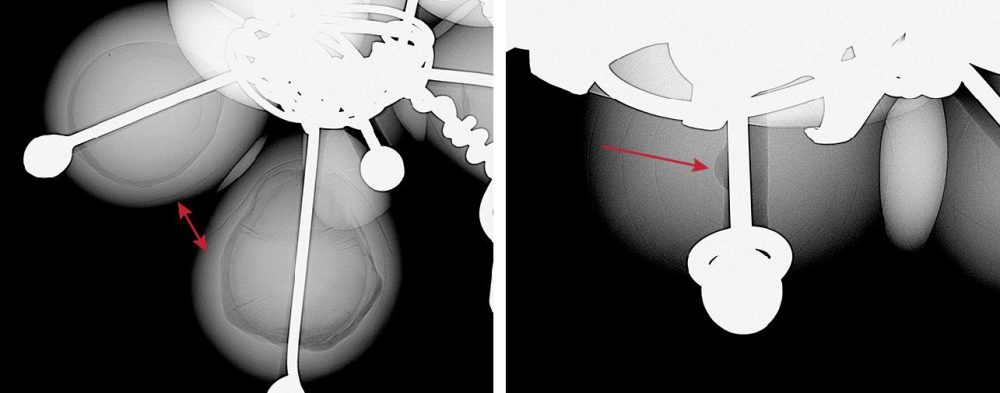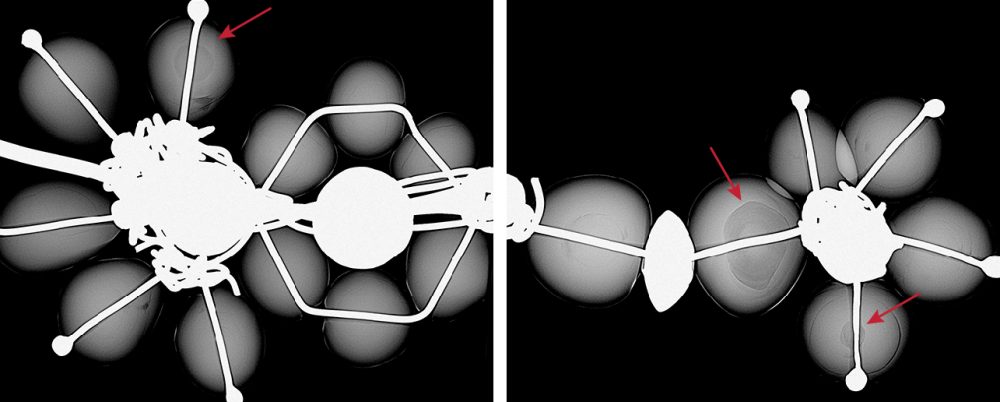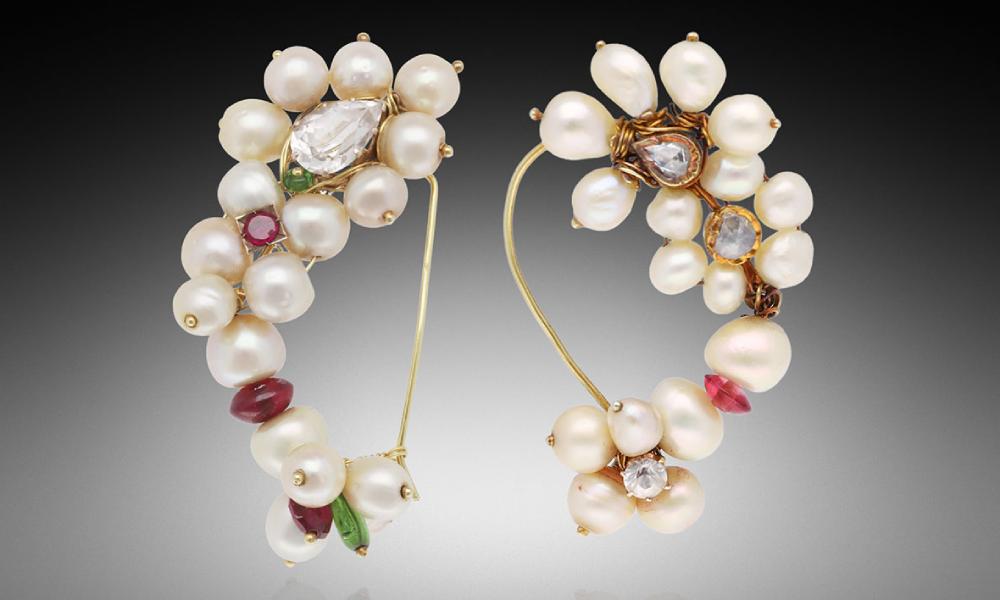The beauty of Indian jewelry lies in the artisanship involved in creating intricate, unique designs. One example is the classic Indian nose ring (known as the nath). It is typically cashew shaped, with a chain to connect it to a hairpiece or earring. The nath exemplifies traditional Maharashtrian jewelry and is usually crafted in yellow gold. Made famous during the Peshwa rule, the nath has been crafted using diamonds, pearls, rubies, and emeralds. Today, the nath is worn mainly for weddings or special occasions, while everyday nose adornments take the form of smaller, simpler studs or rings made from gold or silver. Recently, GIA’s Mumbai laboratory received two traditional nose rings for pearl identification.
Each was set with 17 drilled pearls, near-drop and button, ranging from light cream to cream in color. They were skillfully strung together with yellow metal wire and set with colored gemstones of various shapes and cutting styles. The pearls in the larger nose ring (figure 1, left) ranged from approximately 6.63 × 6.09 mm to 8.42 mm, and the item weighed a total of 13.96 g. Those in the smaller nose ring (figure 1, right) ranged from 5.38 mm to 8.02 × 7.61 mm, and this piece weighed 9.05 g overall. When viewed under 40× magnification, the pearl surfaces in both pieces showed typical nacreous overlapping aragonite platelets and a medium to high surface luster. Energy-dispersive X-ray fluorescence (EDXRF) spectrometry revealed manganese levels below the instrument’s detection level and a strontium content averaging 950 ppm. In addition, the pearls were inert to X-ray fluorescence, indicative of saltwater origin. They showed a moderate greenish yellow reaction under long-wave ultraviolet light and a weaker reaction of similar color under short-wave UV. Real-time microradiography imaging revealed internal structures similar to those observed in natural pearl studies for various Pinctada-species mollusks (K. Scarratt et al., “Natural pearls from Australian Pinctada maxima,” Winter 2012 G&G, pp. 236–261; N. Nilpetploy et al., “The gemological characteristics of Pipi pearls reportedly from Pinctada maculata,” Winter 2018 G&G, pp. 418–427). The radiopaque areas visible on the microradiographs of both items correspond to the yellow metal fittings and wire, since they are denser and prevent X-rays from passing through.

Five pearls from the larger nath revealed an organic-rich internal structure with varying patchy light and dark gray contrasting areas, along with an acicular structure radiating from their centers that occupied almost half of the internal structure (figure 2, left). Two pearls showed “collapsed cores” close to the drill holes (figure 2, right); the bulk of the cores, if any, were removed as a result of drilling. The remaining ten pearls displayed fine concentric rings and growth arcs, all proving their natural origin.


